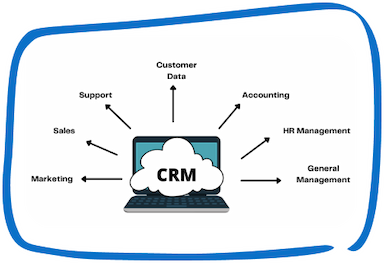Enterprise resource planning (ERP) systems are essential tools that allow businesses to integrate and automate their core business processes, including finance, human resources, inventory management, and supply chain management. However, implementing an ERP system can be a complex and challenging process that requires careful planning, coordination, and collaboration between the business and the implementation team. In this blog post, we will outline the steps to successful ERP implementation.
1. Define the Goals and Objectives
The first step in successful ERP implementation is to define the goals and objectives of the project. This involves identifying the specific business processes that the ERP system will support, the expected benefits of the system, and the timeline for implementation. The business should also establish a clear understanding of the roles and responsibilities of the implementation team and the business stakeholders involved in the project.
2. Conduct a Business Process Review
The next step in successful ERP implementation is to conduct a business process review. This involves mapping out the existing business processes and identifying areas where the ERP software can improve efficiency, accuracy, and automation. The business should also identify any customization needs and prepare a comprehensive requirements document.
3. Choose the Right ERP System and Implementation Partner
The third step in successful ERP implementation is to choose the right ERP system and implementation partner. The business should evaluate multiple ERP vendors and systems based on their functionality, scalability, ease of use, and support options. The business should also select an experienced implementation partner that has a proven track record of successful ERP implementations and understands the unique requirements of the business.
4. Develop a Detailed Project Plan
The fourth step in successful ERP implementation is to develop a detailed project plan. This involves identifying the specific tasks, milestones, timelines, and resources required for each phase of the project. The project plan should also include a communication plan that outlines how stakeholders will be informed of progress, issues, and changes throughout the project.
5. Prepare the Infrastructure and Data
The fifth step in successful ERP implementation is to prepare the infrastructure and data. This involves ensuring that the hardware, software, and network infrastructure are compatible with the ERP system. The business should also clean and migrate data from the existing systems to the new ERP system, ensuring data integrity and accuracy.
6. Configure and Customize the ERP System
The sixth step in successful ERP implementation is to configure and customize the ERP tool. This involves setting up the system based on the business requirements identified in the business process review. The business should also customize the system to meet specific requirements, such as creating custom reports or workflows.
7. Test and Refine the ERP System
The seventh step in successful ERP implementation is to test and refine the ERP system. This involves conducting multiple rounds of testing to ensure that the system functions as expected and meets the business requirements. The business should also refine the system based on user feedback and issues identified during testing.
8. Train Users and Prepare for Go-Live
The eighth step in successful ERP accomplishment is to train users and prepare for go-live. This involves providing comprehensive training to end-users and stakeholders to ensure that they understand how to use the system and the benefits it provides. The business should also prepare for the go-live date by ensuring that all stakeholders are informed, and all necessary resources are in place.
9. Go-Live and Post-Implementation Support
The final step in successful ERP accomplishment is to go-live and provide post-accomplishment support. This involves deploying the system to production and providing ongoing support and maintenance to ensure that the system continues to meet the business requirements. The business should also establish a post-implementation review process to identify areas for improvement and ensure that the system is delivering the expected benefits.
In conclusion, successful ERP accomplishment requires careful planning, coordination, and collaboration between the business and the implementation team. By following these steps, businesses can ensure that their ERP solution meets their unique requirements
Speak with Our Team!
4.9 Stars
1k+ reviews on






